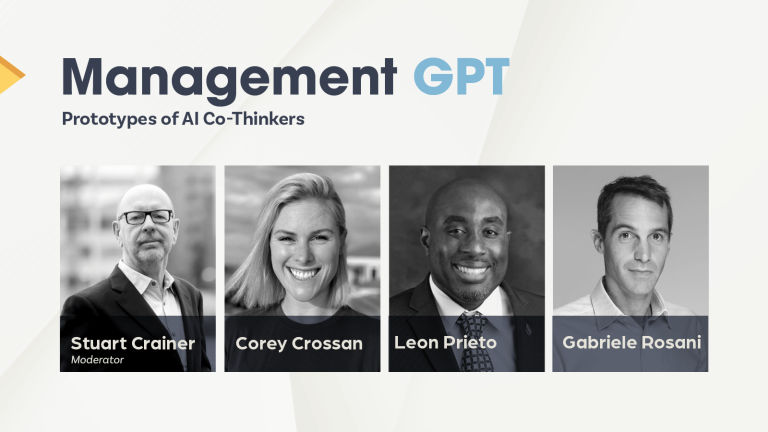
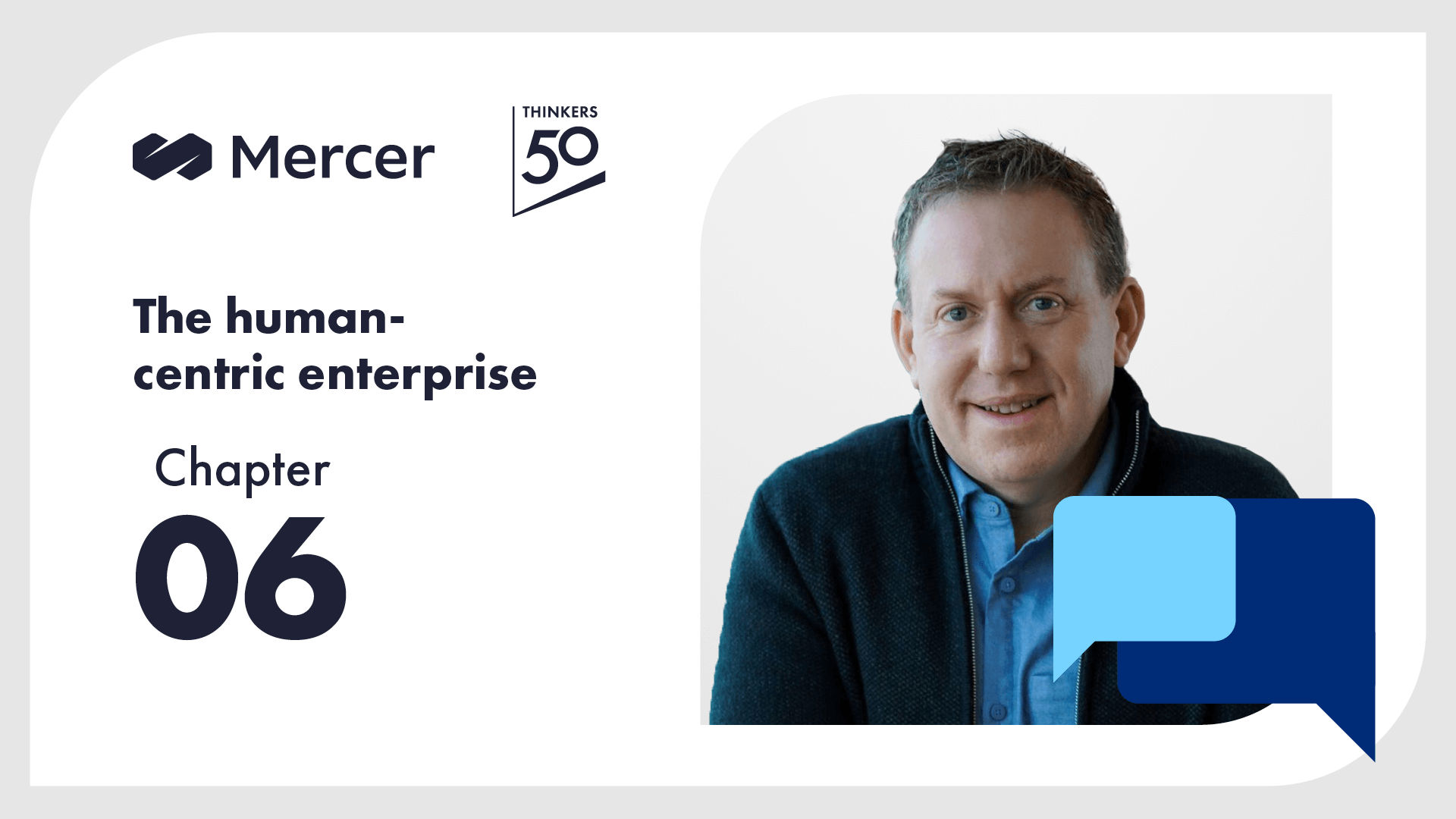
The Human-Centric Enterprise ebook is the result of a partnership between Thinkers50 and Mercer. The subject is close to our hearts at Thinkers50: understanding how to manage and lead organisations in the most humane way — in a way which truly maximizes the amazing variety of human potential.
With contributions from Mercer experts, The Human-Centric Enterprise portrays a working world in which best practice is being realigned to accord with the needs and aspirations of people rather than balance sheets or restrictive notions of efficiency. It acknowledges the powerful evolution of amazing technologies, but places them in the human context, as enablers of human achievement rather than replacements for people.
Jason is a senior partner and the Global Leader of Digital HR Strategy with Mercer | Leapgen. From January 2018 to March 2023, he was co-founder and CEO of Leapgen, a digital transformation company helping organizations shape their future workplaces — now Mercer | Leapgen. Jason continues broadening executive mindsets to rethink how to improve design and delivery of employee services and drive the shift from doing technology projects to being a digital function. With the new partnership of Mercer | Leapgen, he now expands the resources and reach to a global market.
Before founding Leapgen, Jason served as the CEO of The Marcus Buckingham Company (TMBC). In 2005, he co-founded Knowledge Infusion LLC and served as its CEO until 2012, when the company was sold to Appirio. He has also held senior leadership roles at PeopleSoft and Ceridian Corporation.
Jason has more than 20 years of experience in the HR and technology industries, and he has collaborated with industry-leading companies in transforming their HR organisations into strategic partners.
He has been recognized globally as one of the top three thought leaders around HR technology and the future of work. He was named one of HR Executive’s Top 100 HR Tech Influencers and one the Top 70 HR Tech Thought Leaders by leadersHum.
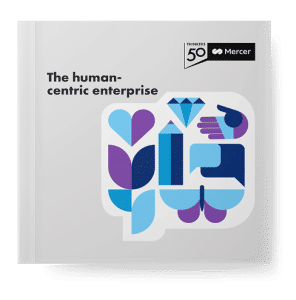
As the future of work rapidly evolves, we must urgently reassess our understanding of where, how and why we work.
Developed by Mercer and Thinkers50, The Human-Centric Enterprise redefines our perspective on putting people at the center of modern workplaces.
We are more technologically savvy and digitally driven than we’ve ever been. We can shop, pay, network, share our experiences, and tune in or tune out how, when and with whomever we choose. We even have this new technology called “generative AI” that can analyze simple to complex inputs and provide a highly relevant response in seconds. There’s an app for everything in our personal lives. So why does it feel so different when we interact with technology at work?
The difference is human-centricity. In the past, business to consumer (B2C) was about humans, and business to business (B2B) was about processes. As technology accelerates, that distinction is changing. Is your organization ready to change with it?
The lines are blurring between B2C and B2B. We know that the pace of technology advances more quickly for B2Cs than B2Bs. It always has; it always will. But in the past, there was also an expectation that B2C would be more engaging, more empathetic — more human — than its business counterpart. Today, we’re on the precipice of a fully digital culture and workforce — where all that savvy and responsiveness are not just being brought into business technology — but demanded. Our most tenured employees are staying in the workforce longer as Gen Zers are ambitiously beginning their careers. Technology is fundamental to meeting the diversified needs of our global, changing and intergenerational workforce. As organizations rethink what it means to be digital and begin designing to put people first, we’re experiencing a revolution in the world of work.
Taking a human-centric approach means we must think hard about how to create empathy at scale. Scaling empathy requires a fundamental shift in the way organizations think about their employees and customers. Put simply, it’s moving away from a transactional mindset and toward a more relational one. Instead of treating employees and customers as numbers on a spreadsheet, organizations need to see them as individuals with unique needs, desires and viewpoints. This change in perspective is essential for creating a more human-centric and successful organization.
To scale empathy effectively, companies can focus on three key areas of the digital-first mindset and commit to making them work together:
Culture: Create a culture of empathy that values and encourages compassion, understanding and emotional intelligence. This means providing training and development opportunities for managers and employees as well as fostering an environment of psychological safety. We discuss psychological safety in greater depth in Chapter 4 — including rethinking fear of failure and how we define success.
Technology: Technology can play a key role in scaling empathy by enabling organizations to gather and analyze data about their employees and customers. Using tools like sentiment analysis and chatbots, organizations can gain insights into how their employees and customers are feeling and respond in a more personalized and empathetic way.
Design: Create products and services with empathy in mind. This means considering the needs and perspectives of different personas and creating experiences that are inclusive, accessible and user friendly.
By focusing on the confluence of culture, technology and design, organizations can build relationships with their employees and customers based on empathy, trust and mutual understanding.
The journey to a successful digital strategy always begins by asking one question: “What is the problem we want to solve?” You can buy the sexiest, most robust technology on the market, and it will fail if you simply implement and go live without first understanding your purpose.
Here’s another question to consider: Is your organization transitioning or actually transforming? Transitioning is changing technology. Transformation is changing the way we work. It’s easy to transition from solution to solution without changing the impact or results. To create a digital strategy that supports transformation, you’ll need to get to know your people, empathize with them and design with them.
This is another way of saying: If you don’t have a digital strategy to understand what you’re trying to accomplish and why, you aren’t ready to purchase technology.
A digital strategy is the North Star of any transformation. It comprises four elements:
Mindset and vision
Your digital strategy needs to be purpose driven and align with your mission as an organization. Determine exactly what that alignment needs to be. Fall in love with the problem, and expand on the question, asking not only “What is the problem we’re trying to solve” but also “When we do solve it, what will the impact be?”
Once you know your purpose, develop a vision for transformation. A vision statement will articulate what you’re actually trying to achieve. It can be used as a compass when making decisions. To understand its impact, you’ll want to support your vision with metrics for success that can be measured and are meaningful to all stakeholders.
People and audience
To create a successful digital strategy, you must also identify whom you’re designing it for. Identifying your audience is critical so that you can design in their best interest, not your own. Leverage the voice of the employee, employee feedback and co-creation when problem-solving.
Process and journey
Next, you’ll need to reimagine processes in order to choose the best solutions and support structural change. Where do employees currently experience friction? Use journey mapping to determine where opportunities exist to recreate end-to-end cross-functional journeys. Ensure those processes are efficient and effective and deliver value to the business.
Technology/solution
And finally, you’ll want to let the possibilities in technology fuel your vision. Once you understand mindset, audience and process, you’ll be well positioned to select the technology that makes the most sense and fits your enterprise best. The right tech will then be able to bring your newly created digital strategy to life.
By adopting this framework, your organization can develop a foundation to design and deliver services that exceed the expectations of the workforce and meet business needs.

Once you’ve established your digital strategy, you can use it to guide and inform decisions you make along your transformation. Keep in mind that creating a digital strategy isn’t a one-time exercise. The world is constantly changing, so you need to frequently reevaluate and adapt to new realities. That means being agile, flexible and able to pivot when needed. For more advice on creating a human-centric experience that better supports transformation, see Chapter 3.
Keep your digital strategy relevant, realistic and aligned with other changes your organization is undergoing. This will ensure your strategy remains a living, breathing thing as you constantly refine and adapt for success.
Yes, you read that right. Technology is only 10% of the equation. You may be thinking, “Wait, you’re telling me to be digital. How can technology be only 10% of that?”
Technology is 10% not because it isn’t important but because humans and how they work should account for 90% of your consideration. Designing for your people means technology must work for you rather than you working for technology. Therefore, it’s essential to design for your people first and consider the right technology later. You need a clear vision informed by the voice of your employees; frictionless experiences with a design focused on end-to-end, cross-functional journeys; processes that are efficient and effective to deliver value to the business; and an empowered workforce — before you make technology decisions. The 10% of the equation that’s technology will be successful only if you’ve done 90% of the work to understand and support your digital experience architecture, technology ecosystem, human resources (HR) function and people data.
Being digital requires an agile mindset focused on enhancing talent and using it optimally rather than replacing it. This year, generative AI infiltrated the world of work, and it’s here to stay. According to Forbes, the jobs most impacted by generative AI are in finance and banking, media and marketing, and legal services. Those least impacted are in manufacturing, agriculture and healthcare. Generative AI may have plenty of people worrying about being replaced — but its real potential to support transformation and adoption has yet to be tapped.
In Q1 of 2023, our Mercer | Leapgen HR Technology Confidence Check indicated that:
It’s 2023! These stats are abysmal. We have the technology and the data to do better.
As the world of work is rapidly changing, so is the role of the HR function. HR should be at the heart of these changes — empowered to own the digital strategy, enabling the organization to be more digitally competent. This means operating in a more consistent and cooperative way — reducing silos, compartmentalization and inconsistencies in experience.
When it comes to technology and experience, your workforce will be judging leadership and HR, not the technology — so choose wisely. For example, your processes and technology should support language that employees understand. They’re eager for you to know them, anticipate their needs and solve any challenges they’re facing at work. But they’re not trained in HR speak. They won’t say, “I have a qualifying life event and need to add a dependent.” They’ll say, “I’m having a baby!” Technology can exacerbate those disconnects, or it can help bridge the gaps.
There are five generations active in today’s workforce: traditionalists (1925–1945), baby boomers (1946– 1964), Gen X (1965–1980), millennials (1981–2000) and Gen Z (2001–2023). Each generation represents a different mindset — with different values and expectations from work, and one size will not fit all. Being people-centered means being willing to tackle unique challenges to avoid bias in ageism, reskilling, and upskilling and provide mobility and opportunity. It also means fostering a culture that supports the breadth of employee expectations within organizations. Technology can also help with this if properly oriented around your stakeholders.
Technology can drive greater efficiency, engagement and value for HR and all stakeholders, but it can’t do this alone. It’s critical to recognize the importance of human expertise and collaboration in achieving these goals.
Being digital requires a human-centric approach to experience, oriented around key questions. How should it feel when employees interact with the tools and resources available to them? Where are employees experiencing friction? Enhance the employee experience by automating, amplifying and augmenting it with technology and other tools:
Consider all moments, not just the big events or “moments that matter,” and consider how you can reduce friction. Friction is the coordinate on the map of experience where employees may get frustrated, discouraged or overwhelmed and abandon the effort altogether. Think about your processes and where they bog down. Investigate points of abandonment, and think outside the box. How does friction differ among personas?
In today’s fast-paced and ever-changing world, it’s more important than ever for organizations to strike a balance between high-touch human and high-touch digital experiences that can best support both.
What does this mean? High-touch human experiences are the personal interactions and relationships between employees and their colleagues, managers and leaders. These interactions encourage a sense of belonging, trust and a shared purpose. High-touch digital experiences, by contrast, involve using technology to facilitate communication, collaboration and learning. Digital tools such as chatbots, virtual assistants and online training platforms can help create personalized experiences for employees and improve their productivity.
Technology can enable efficiency and seamless operations, but it cannot replace human connection and empathy. Technology makes it easier than ever to connect with customers and employees in new and innovative ways. However, we must remember the importance and unique value of human connection. That’s why the most successful organizations are those that establish a balance between these two worlds, creating seamless experiences that leverage the best of both digital and human touchpoints. By doing so, they’re able to build stronger relationships, drive engagement and ultimately create more value for all stakeholders.
Another way to understand this is through the concept of “heads, hands and hearts work.” The “heads” work refers to knowledge-based work that requires cognitive skills, such as critical thinking, problem-solving and decision-making. “Hands” work refers to manual and technical work that requires physical skills, such as dexterity, coordination and agility. Finally, “hearts” work refers to work that involves emotional intelligence, such as empathy, communication and relationship-building.
Organizations need to prioritize a culture that values all three types of work and recognizes the unique contributions of employees who excel in each area. Technology can be used to automate some of the more routine aspects of “hands” work, freeing up employees to focus on “heads” and “hearts” work, which are more difficult to automate. In this way, organizations can create a more engaged and motivated workforce that’s better equipped to meet the challenges of the modern workplace.
Being digital isn’t a race. It is, however, a continuous commitment to the business and the workforce. That means you must be realistic and holistic in order to support change. Start where you are. Your digital strategy should be driven by the art of the possible and tethered closely to the needs of stakeholders across your organization.
Once you have a vision that aligns with both business goals and people goals, it will be easier to communicate and deploy your strategy across the organization. If people don’t feel included as stakeholders — or don’t see technology change as human-centric — they’re more likely to dig in and toss up roadblocks.
Consider how you collaborate and communicate. Are you collaborating east to west or north to south? East– west thinking crosses all business areas, whereas north–south thinking exacerbates working in silos. Digital only breaks silos if we think east–west. Leverage intentionality to determine what you want to be high-touch human versus high-touch digital. High-touch human says, “I want to talk with someone.” What things do you want your people to do, and what do you want automated? Stitch together the fabric of your transformation with threads of experience design. Get to know your people. How do they feel? What do they want? The longevity and success of your business are heavily influenced by the workforce that brings to life the products or services you offer.
At the end of the day, nothing changes unless you do. Being digital is a mindset and a framework through which you can transform your organization and the world of work.
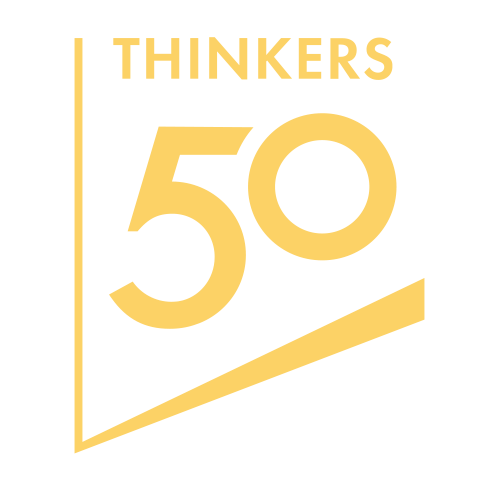
Thinkers50 Limited
The Studio
Highfield Lane
Wargrave RG10 8PZ
United Kingdom
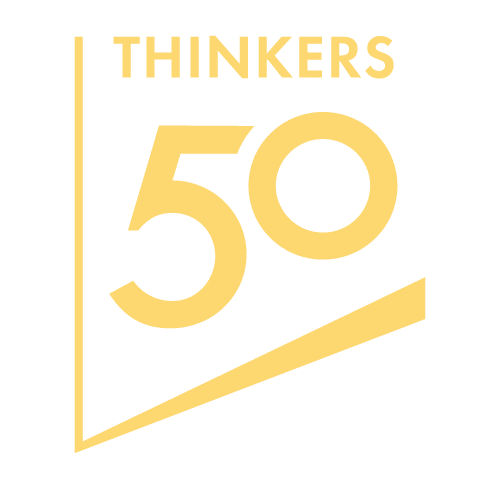
Thinkers50 Limited
The Studio
Highfield Lane
Wargrave RG10 8PZ
United Kingdom
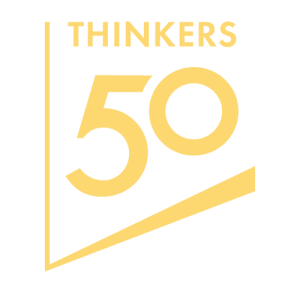
| Cookie | Duration | Description |
|---|---|---|
| LANG | 9 hours | Linkedin set this cookie to set user's preferred language. |
| nsid | session | This cookie is set by the provider PayPal to enable the PayPal payment service in the website. |
| sp_landing | 1 day | The sp_landing is set by Spotify to implement audio content from Spotify on the website and also registers information on user interaction related to the audio content. |
| sp_t | 1 year | The sp_t cookie is set by Spotify to implement audio content from Spotify on the website and also registers information on user interaction related to the audio content. |
| tsrce | 3 days | PayPal sets this cookie to enable the PayPal payment service in the website. |
| x-pp-s | session | PayPal sets this cookie to process payments on the site. |
| __cf_bm | 30 minutes | This cookie, set by Cloudflare, is used to support Cloudflare Bot Management. |
| Cookie | Duration | Description |
|---|---|---|
| l7_az | 30 minutes | This cookie is necessary for the PayPal login-function on the website. |
| Cookie | Duration | Description |
|---|---|---|
| CONSENT | 2 years | YouTube sets this cookie via embedded youtube-videos and registers anonymous statistical data. |
| _ga | 2 years | The _ga cookie, installed by Google Analytics, calculates visitor, session and campaign data and also keeps track of site usage for the site's analytics report. The cookie stores information anonymously and assigns a randomly generated number to recognize unique visitors. |
| _gat_gtag_UA_10408481_1 | 1 minute | Set by Google to distinguish users. |
| _ga_ZP8HQ8RZXS | 2 years | This cookie is installed by Google Analytics. |
| _gid | 1 day | Installed by Google Analytics, _gid cookie stores information on how visitors use a website, while also creating an analytics report of the website's performance. Some of the data that are collected include the number of visitors, their source, and the pages they visit anonymously. |
| Cookie | Duration | Description |
|---|---|---|
| NID | 6 months | NID cookie, set by Google, is used for advertising purposes; to limit the number of times the user sees an ad, to mute unwanted ads, and to measure the effectiveness of ads. |
| test_cookie | 15 minutes | The test_cookie is set by doubleclick.net and is used to determine if the user's browser supports cookies. |
| VISITOR_INFO1_LIVE | 5 months 27 days | A cookie set by YouTube to measure bandwidth that determines whether the user gets the new or old player interface. |
| YSC | session | YSC cookie is set by Youtube and is used to track the views of embedded videos on Youtube pages. |
| yt-remote-connected-devices | never | YouTube sets this cookie to store the video preferences of the user using embedded YouTube video. |
| yt-remote-device-id | never | YouTube sets this cookie to store the video preferences of the user using embedded YouTube video. |
| yt.innertube::nextId | never | This cookie, set by YouTube, registers a unique ID to store data on what videos from YouTube the user has seen. |
| yt.innertube::requests | never | This cookie, set by YouTube, registers a unique ID to store data on what videos from YouTube the user has seen. |
| Cookie | Duration | Description |
|---|---|---|
| DEVICE_INFO | 5 months 27 days | No description |
| loglevel | never | No description available. |
| m | 2 years | No description available. |
Thinkers50 Limited has updated its Privacy Policy on 28 March 2024 with several amendments and additions to the previous version, to fully incorporate to the text information required by current applicable date protection regulation. Processing of the personal data of Thinkers50’s customers, potential customers and other stakeholders has not been changed essentially, but the texts have been clarified and amended to give more detailed information of the processing activities.